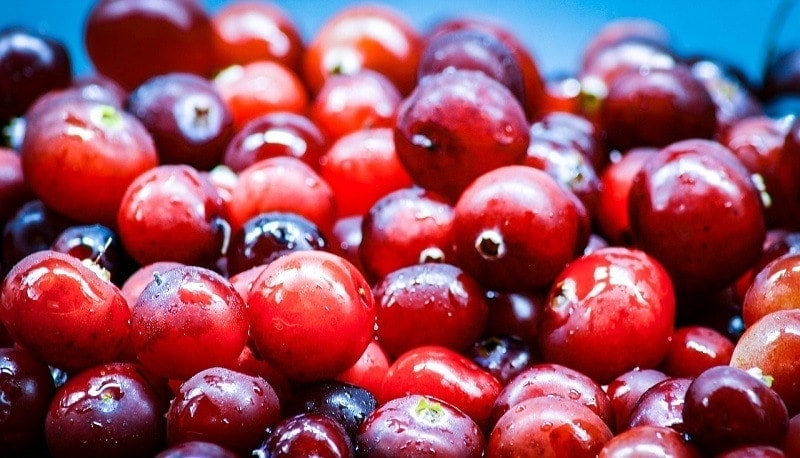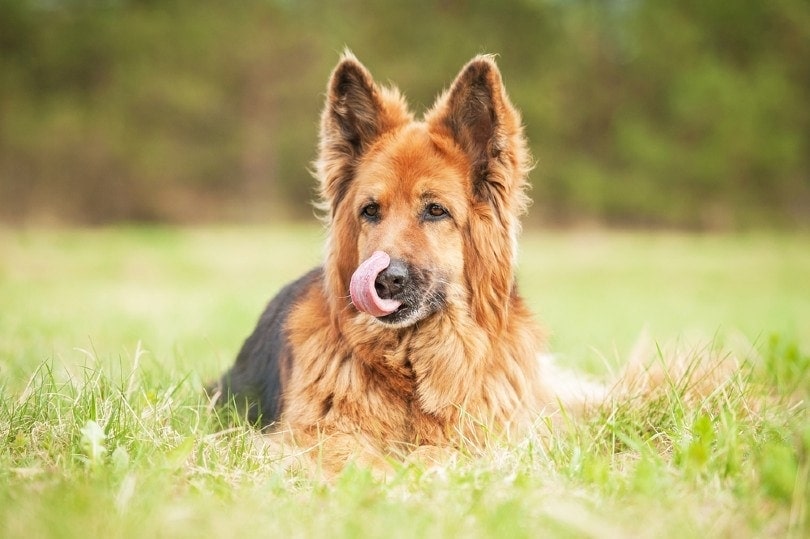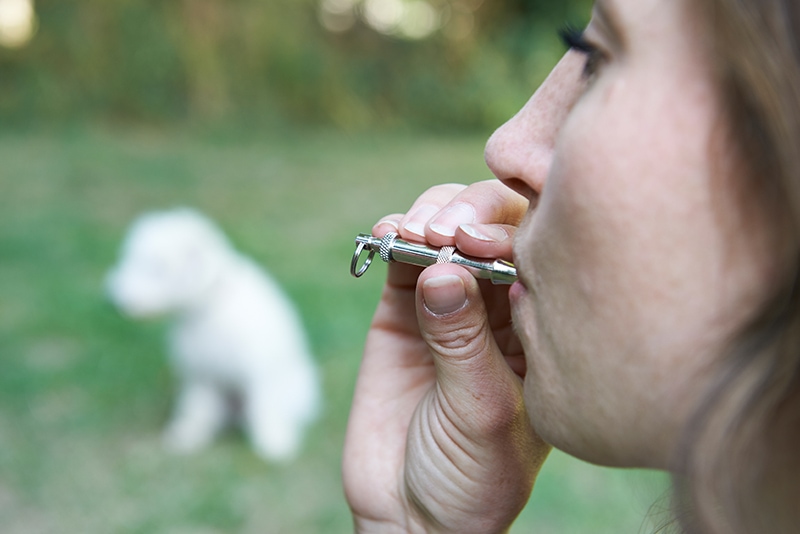Cavalier King Charles Spaniel vs Cocker Spaniel: The Key Differences (With Pictures)

Updated on
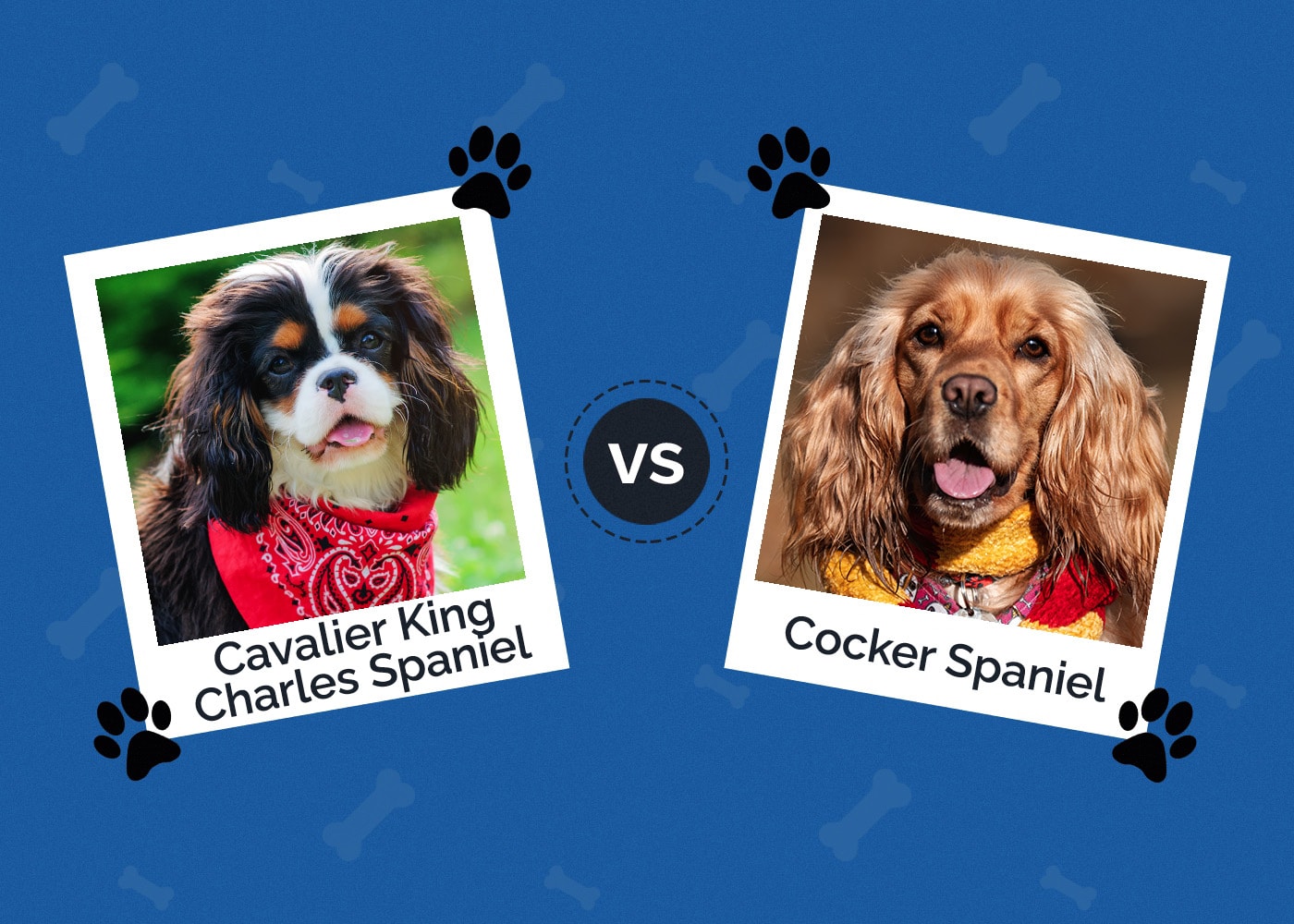
The Cavalier King Charles Spaniel and the Cocker Spaniel are very similar breeds. They’re active, intelligent, affectionate dogs that make excellent family dogs. But if you’re here because you’re thinking of getting one, you might wonder what makes one a better fit for your family.
Below, we’ve gone through everything you might want to know about these beautiful dogs to help you make this decision, from personality to the care that goes into keeping the dogs happy and healthy. Hopefully, by the end, you will see which breed would be the perfect fit for your home!
Visual Differences
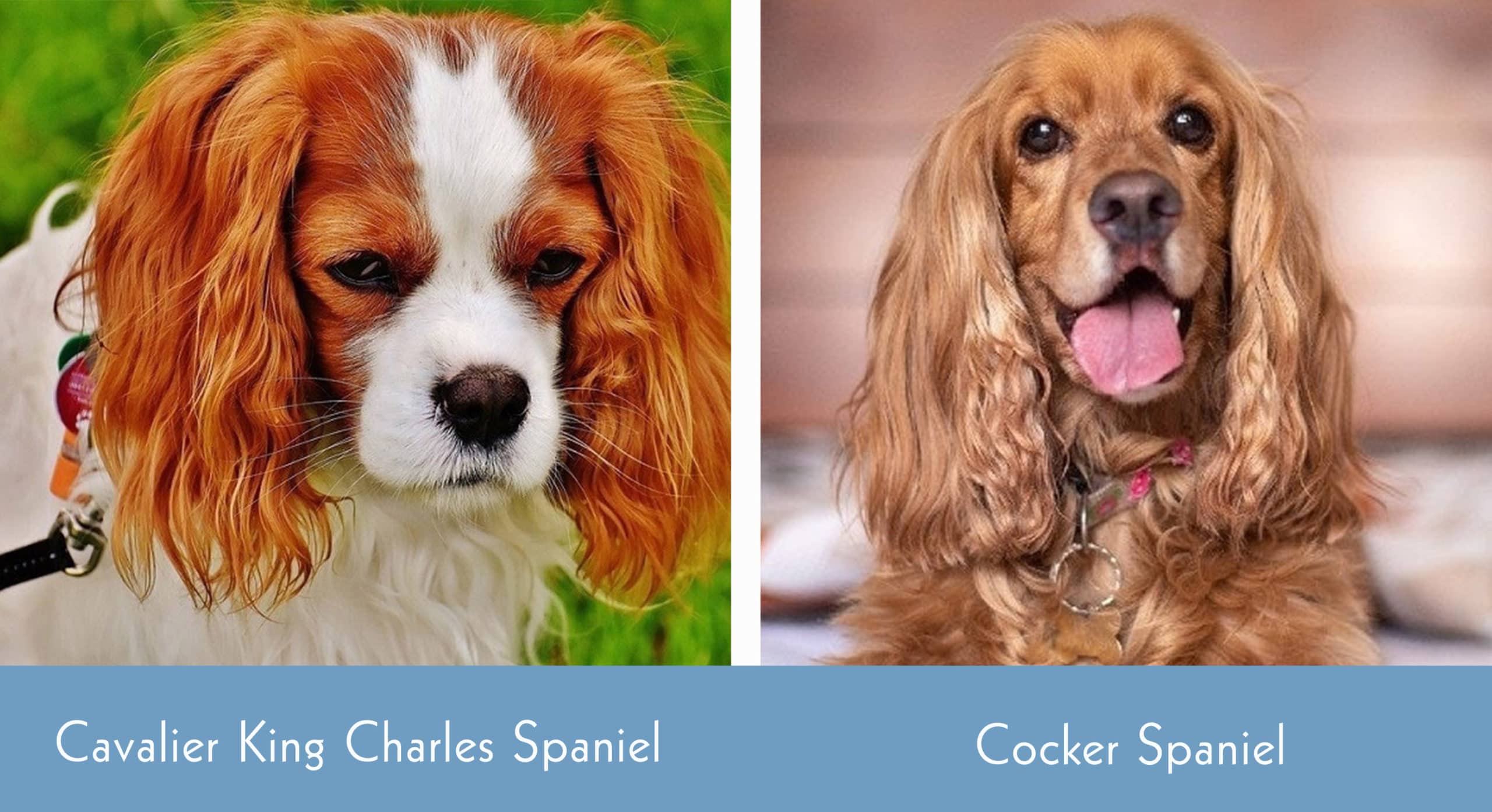
At a Glance
- Average height (adult): 12–13 inches
- Average weight (adult): 12–18 pounds
- Lifespan: 9–14 years
- Exercise: 1+ hours a day
- Grooming needs: High maintenance
- Family-friendly: Yes
- Cat-friendly: Yes
- Trainability: Intelligent and eager to please
- Average height (adult): 14–15 inches
- Average weight (adult): 28–32 pounds
- Lifespan: 12–15 years
- Exercise: 1+ hours a day
- Grooming needs: High maintenance
- Family-friendly: Yes
- Cat-friendly: Yes
- Trainability: Intelligent and eager to please
Cavalier King Charles Spaniel Overview
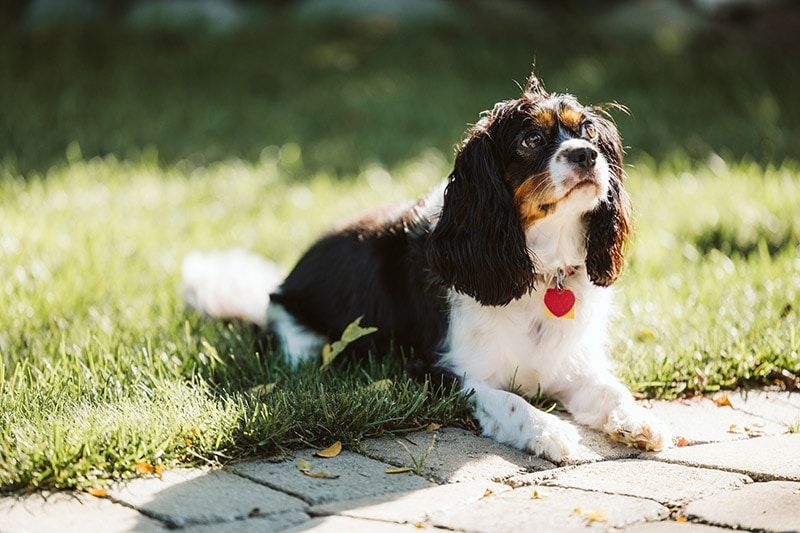
The Cavalier King Charles Spaniel is the descendant of the toy Spaniel you might recognize from northern European paintings from the 16th, 17th, and 18th centuries. They were initially bred to warm their owner’s laps on chilly carriage rides or in drafty castles. They gained their name from King Charles II, who generally had two or three of these dogs at his heels.
The Cavalier dog we are familiar with today was bred in the early 1900s when breeders tried to move away from the King Charles Spaniels from the mid-19th century. These dogs were affectionately known as “Charlies,” and they had domed skulls, flatter faces, and undershot jaws.
The breeders were largely successful, resulting in the Cavalier King Charles Spaniel we know and love today. In the 1950s, the Cavalier was bred in the United States, but it wasn’t fully recognized by the American Kennel Club (AKC) until 1996. The cost of one of these puppies can go from $1,000 to $2,500.
Personality
The Cavalier King Charles Spaniel is a playful, intelligent, affectionate dog that loves nothing more than spending time with its humans. They are adaptable and happy with country or city living as long as plenty of mental and physical stimulation is available.
Cavaliers are excellent with other pets and children, which is why they’re popular with families. They suffer from separation anxiety and get quite upset if left alone for too long. So, if you’re out of the house often, this is not the breed for you.
Exercise
There is a lot of energy squished into the Cavalier’s tiny body, and they need at least an hour of exercise a day to keep them healthy and happy, but if you want to be out longer, your Cavalier will happily accompany you. They love to play and often perform well in agility competitions.
We recommend splitting the hour of activity up into two, with some time off-leash in a secure, safe place. Not only will playtime in the park keep your Cavalier active, but it will also be an excellent opportunity to bond. Since they love spending time with their family, this will make your Cavalier the happiest dog in the park.
Training
Cavaliers are eager to please, which makes them easy to train. They react well to positive and consistent reward-based training, and the younger they are, the better. This will ensure your Cavalier doesn’t pick up any bad habits. The trick with training is that it’s always easier to prevent a bad habit than to try and train it out of your dog.
Early socialization is so important when it comes to your Cavalier. Introduce them to other dogs, humans, and experiences to help them gain confidence. Cavaliers are also used for therapy work because they are so trainable and affectionate.
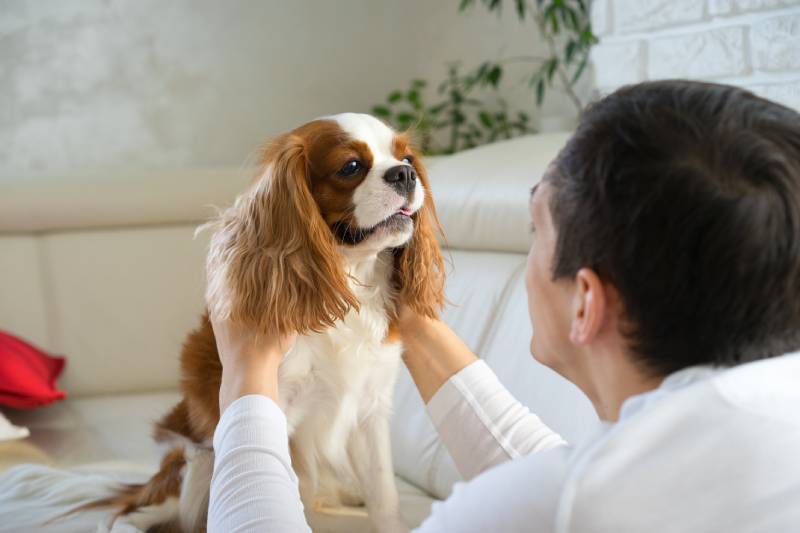
Health & Care
Cavalier King Charles Spaniels can develop a variety of health risks, such as:
- Heart conditions: Generally caused by mitral valve disease. This will often be first noticed as a heart murmur.
- Eye problems: Inherited problems like cataracts are also included.
- Hip Dysplasia: This is where the thigh bone doesn’t fit into the hip bone correctly.
- Patellar Luxation: This condition occurs when the kneecaps slip out of place temporarily.
- Ear problems: You will need to regularly check your Cavalier’s ears as they are prone to ear infections.
- Teeth problems: While this is common in all breeds, there is the potential for it to be worse in Cavaliers because of their shorter muzzle.
- Chiari malformation and syringomyelia (CM/SM): Fluid-filled areas develop in the spinal cord near the Cavalier’s brain, which is very painful.
- Episodic Falling (EF): This condition is unique to Cavaliers. It’s been described as a fit, but it’s really a stiffening of the muscles that leaves the body rigid. It’s been reported as happening when the dog has been excited, exercising, or stressed.
Diet
Regarding food, Cavalier King Charles Spaniels need around 1 to 1 ½ cups each day. This will vary as your Cavalier grows older. Choose a high-quality brand that uses meat protein as the first ingredient. Cavaliers do not require specialized diets, but it’s best to avoid brands that contain preservatives and fillers that do not have vital nutrients.
Grooming
A Cavalier’s coat is relatively high-maintenance. They must be brushed daily to ensure their fur isn’t matted. They shed frequently and will need extra brushing in Spring and Fall because their shedding increases. They will also need to be groomed professionally every 4 to 6 weeks.
Suitable for:
Cavalier King Charles Spaniels are suitable for families with children and other pets, but they also do well with someone living alone. They enjoy spending time with their favorite humans, and they will be happy as long as you are home often and have time for their exercise needs. They are an adaptable breed and do well in the city or country. As a result, the Cavalier is ideal for most families.
Cocker Spaniel Overview
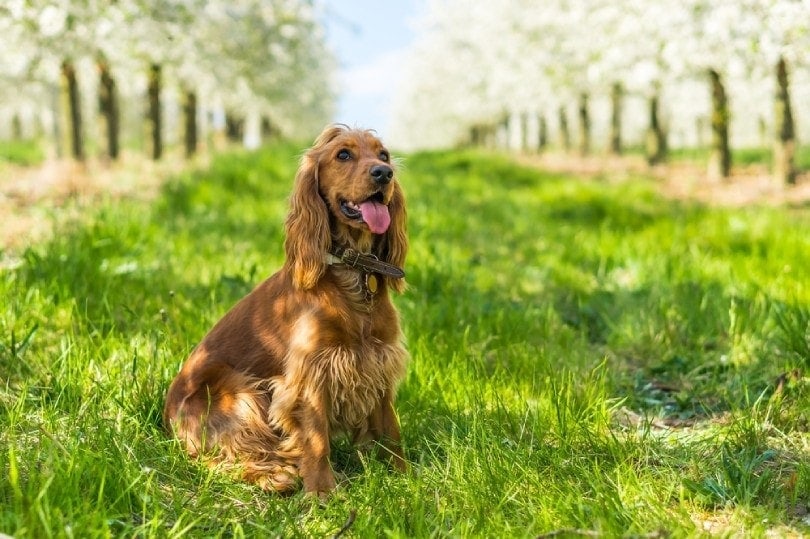
Cocker Spaniels originated in Spain and have existed since the 14th century. They are known as hunting dogs, but even in the 1800s, they were split into two groups: toys for companionship and hunting dogs. They were recognized in 1892 as an official breed in England and soon became popular in the United States. In 1881, the American Spaniel Club was created, and it’s the oldest breed club in America!
Cocker Spaniels were recognized as a separate breed from American Cocker Spaniels in 1946 and were one of the first nine breeds that the AKC recognized. The price of a Cocker Spaniel varies from $800 to $2,000 on average, but a pedigree puppy can cost as much as $3,000.
Personality
If you’ve ever met a Cocker Spaniel you’ll probably remember it most for its tail, which is always wagging. It’s known as a happy, lively dog that might have started life as a gun dog, but now enjoys life with its family.
Cocker Spaniels love company and will be happy in the country or the city as long as they have somewhere safe and secure to run and play. They are excellent family dogs and are good with children. If they have been socialized from a young age, they will also get along with other pets.
Exercise
Cocker Spaniels require at least 2 hours of exercise a day. They are happy with multiple daily walks to keep them active and prevent them from getting bored. They also enjoy playtime with their families. If your kids are out in the yard, your Cocker Spaniel will no doubt be with them. You might also find that if your dog is from working parents, it will need more time to run around than the average Cocker Spaniel.
Cocker Spaniels also need an off-the-leash activity to allow them to burn off all that energy. They are quick and agile and tend to do well in agility contests. They are prone to anxious behaviors like barking and crying, and if they’re outdoors alone, they’ll keep busy by barking or digging.
Training
Cocker Spaniels are highly trainable, and since they were originally bred as hunting companions, they are particularly good at retrieving. They are intelligent and willing to learn, which is the perfect combination for a good student. They respond well to positive reinforcement and obedience training.
Since Cocker Spaniels are inquisitive, ensuring they have mental stimulation is vital. They love interactive games such as fetch, but you can also purchase puzzle games to challenge their minds.
Socializing at a young age will help your puppy to become a happy and confident adult, so be sure to take the time to introduce them to different people, animals, and experiences. They’re also very social, so they’ll probably want to say hello to everyone you meet on a walk.
Because they suffer from separation anxiety, you’ll need to teach them that it’s okay to be left alone for short periods. You can do that by training them as early as possible and being consistent with your training.
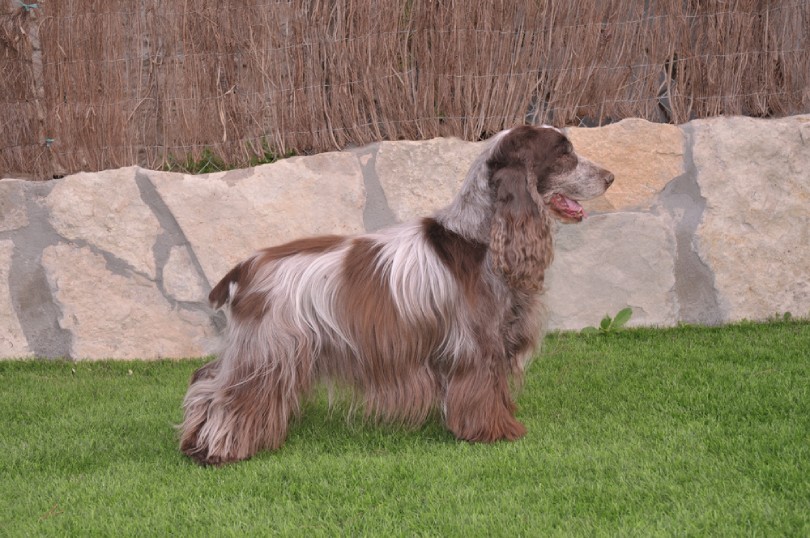
Health & Care
Cocker Spaniels have been known to suffer from a few different health risks, which are:
- Hip Dysplasia: This is when the hip joint doesn’t fit together perfectly, and eventually, your dog will develop arthritis.
- Ear problems: Otitis or ear inflammation is prevalent in Cocker Spaniels because of their floppy ears, which can trap moisture inside them. This makes it easy for yeast and bacteria to thrive. You can combat this with regular cleaning.
- Skin infections (Pyoderma): This occurs if you neglect your Cocker Spaniel’s grooming needs. Tangles form tight mats that trap moisture and bacteria, leading to infections.
Diet
Cocker Spaniels are active dogs and should be fed 2 ½ to 3 cups of dog food a day. A mixture of wet food and kibble can provide a balanced diet for Cockers, but you should look for brands that offer high-quality meat proteins, moderate fat levels, vitamins, minerals, and carbohydrates. When your pet becomes a senior, you should transition to a senior diet with less fat and carbohydrates than adult food.
Grooming
Cocker Spaniels have high-maintenance coats, which require daily brushing. You also might want to give them a brush after a walk to ensure there is nothing stuck in their fur. You will also have to take them to a professional groomer every 3 months to keep the coat healthy and your dog comfortable. As they are also prone to ear infections, you will need to check their ears regularly for signs of infection or debris.
Suitable for:
Cocker Spaniels are happy, affectionate, active dogs that love spending time with their families. They are suitable to keep in the city or country if they have space to run and play. They can suffer from separation anxiety and can be pretty vocal about it, so it will need to be trained out of them. They’re ideal for most families with the time to fulfill their high-maintenance grooming and exercise needs.
Which Breed Is Right for You?!!
The Cavalier King Charles Spaniel and Cocker Spaniel are very similar dogs. And at first glance, you might wonder what sets them apart. While the Cocker Spaniel is larger, it isn’t so big that it cannot live in an apartment.
The Cocker Spaniel is more vocal than the Cavalier. If left alone, the Cocker will be very loud about its distaste. They also require more exercise and playtime than the Cavalier. It might not seem like much, but exercise is essential for your dog’s mental stimulation and for curbing destructive behaviors that can arise from boredom and frustration.
In terms of exercise, training, and grooming (because it’s a bigger dog), the Cocker Spaniel needs just a little more from you than the Cavalier. So, if you are in love with both dogs but need a slightly less high-maintenance version, the Cavalier is for you. Cavaliers and Cockers are loving and playful, so whichever you pick, you will instantly fall in love!
Featured Image Credit: (L) Maria Evseyeva, Shutterstock | (R) Kristina Chizhmar, Shutterstock




